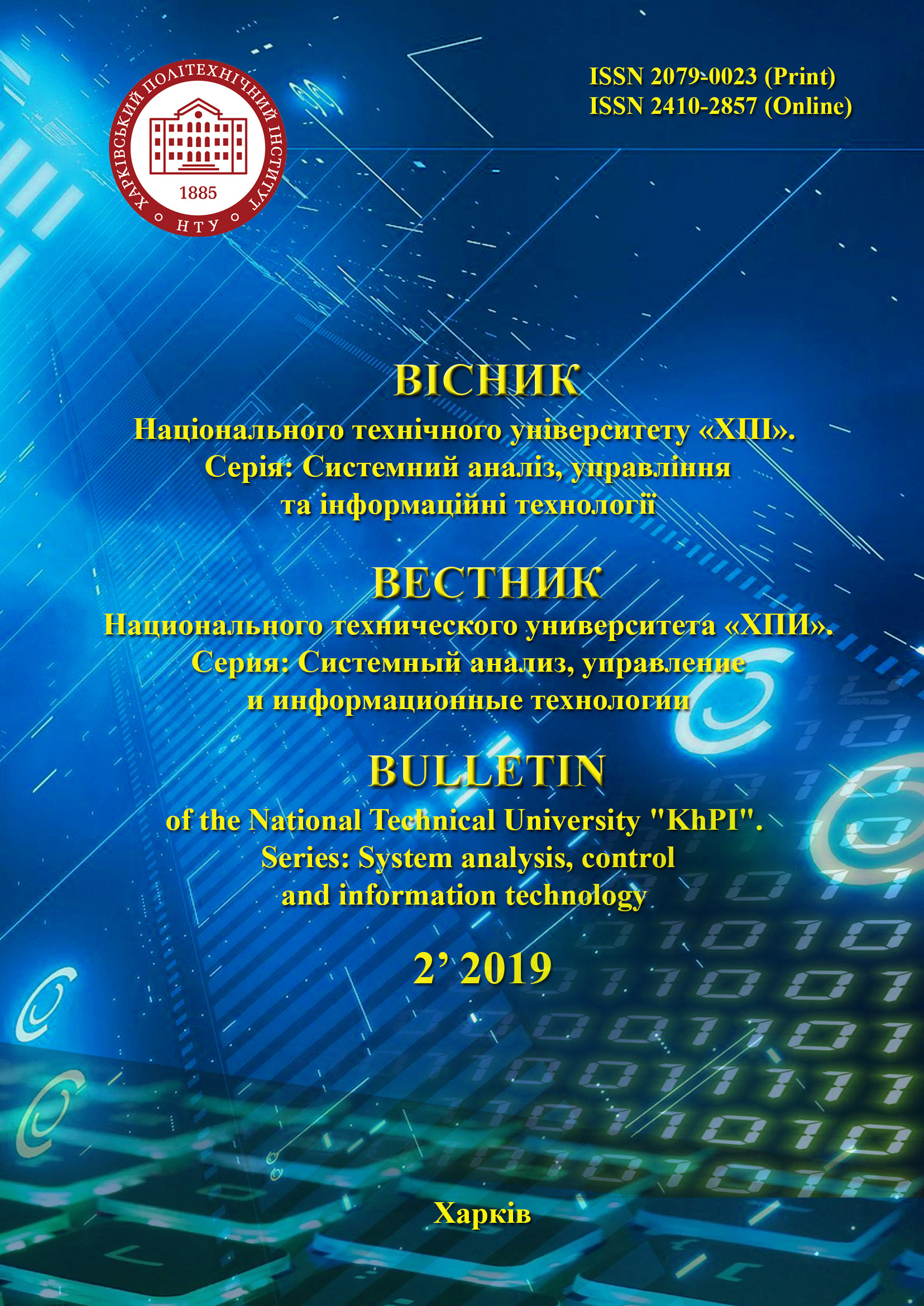WAYS TO IMPROVE THE QUALITY OF THE PROCESS OF DEVELOPMENT OF SOFTWARE BASED ON MODELS OF MATURITY
DOI:
https://doi.org/10.20998/2079-0023.2019.02.11Keywords:
quality, software development process, maturity model, focus area, operations, maturity model formalization, collective expert assessment methodologyAbstract
The basic evolution stages of the product and services quality concept are briefly discussed starting with the Taylor’s system concept total quality management TQM (Total Quality Management). Given the universal nature of the ISO-9000standardseries, they were applied in the field of software engineering. The ways of the quality improvement of the software development process (DP software) are considered on the basis of maturity models. The two main maturity models are: CMMI (Capability Maturity Model Integration) and SPICE (Software Process Improvement and Capability dEtermination). CMMI is implemented in two versions - discrete and continuous. The first one corresponds to the concept of "maturity level," and the second - to the "opportunity level". The assessment of the current state of the DP software organization and individual focus areas relate respectively to these concepts. In contract to the CMMI model, the SPICE maturity model is implemented in only one version - continuous presentation. This model defines only the concept of "opportunity level" of individual processes. The equivalent of the focus area of the CMMI model is the concept of the SPICE model process which consists of certain operations. The main disadvantage of the CMMI model is that it does not specify a software developer’s organization. On the other hand, when using the SPICE model in relation to an individual process, experts may use the following information: project management methodology; model of the life cycle of DP software; features of the subject area; organization goals. On the basis of the considered structure and the comparative analysis of these models, their individual properties were identified, which made it possible to define the ways of DP software maturity improvement. The main of these are: the formalization of maturity models; the development of mathematical models for increasing the level of maturity of both individual processes and the whole DP software; creating a discrete maturity model based on SPICE; using the methodology of collective expert assessment of the initial state of individual focus areas of the SMMI model and the processes of the SPICE model.
References
Persse J. R. Process Improvement Essentials. O'Reilly, 2006. 352 p.
Poulin L. A. Reducing risk with software process improvement. Auerbach Publ., 2005. 288 p.
Schlickman J. ISO 9001:2000 Quality Management System Design. Artech House Publ., 2003. 406 p.
Mutafelija, B. Process improvement with CMMI v1.2 and ISO standards. Auerbach Publ., 2009. 406 p.
Chrissis M. B., Konrad M., Shrum S. CMMI: Guidelines for Process Integration and Product Improvement. Addison-Wesley Professional Publ., 2003. 688 p.
Pyzdek T., Keller P. A. The Six Sigma Handbook. 5-th Ed. New York, McGraw-Hill Education Publ., 2018. 20 p.
Godlevskiy M.D., Braginskiy I. L. Dinamicheskaya model i algoritm upravleniya kachestvom protsessa razrabotki programmnyih sistem na osnove modeli zrelosti [Dynamic model and quality management algorithm for the development of software systems based on the maturity model]. Problemyi informatsionnyih tehnologiy [Information Technology Issues]. Herson, OLDI-Plyus Publ., 2012, pp. 6–13.
Godlevskij M. D., Goloskokova A. A. Sintez staticheskih modelej planirovaniya uluchsheniya kachestva processa razrabotki programmnogo obespecheniya [Synthesis of static planning models for improving the quality of the software development process]. Skhіdno–Єvropejs'kij zhurnal peredovih tekhnologіj [Eastern-European Journal of Enterprise Technologies]. Kharkіv, PP «Tehnologіchnij centr» Publ., 2015, no. 3/2 (75), pp. 23–29.
Godlevskij M. D., Rubin E. E., Goloskokova A. A. Dinamicheskaya model' planirovaniya uluchsheniya kachestva processa razrabotki programmnogo obespecheniya [A dynamic planning model for improving the quality of the software development process]. Visnyk NTU "KhPI": zb. nauk. pr. Seriya: Sy’stemny’janaliz, upravlinnya ta informacijnitexnologiyi [Bulletin of NTU "KhPI". Series: System analysis, control and information technology]. Kharkiv, NTU "KhPI" Publ., 2015, no. 58 (1167), pp. 3–6.
Godlevskij M. D., Rubin Je. E., Goloskokova A. A. Uluchshenie kachestva processa razrabotki programmnogo obespechenija na osnove metodov posledovatel'nogo analiza variantov i lokal'noj optimizacii [Improving the quality of the software development process based on methods of sequential analysis of options and local optimization]. Visnyk NTU «KhPI»: zb. nauk. pr. Seriya: Sy’stemny’janaliz, upravlinnya ta informacijnitexnologiyi [Bulletin of NTU "KhPI". Series: System analysis, control and information technology]. Kharkiv, NTU "KhPI" Publ., 2014, no. 55 (1097), pp. 5–10.
Godlevskyi M. D., Goloskokova A. A., Chipizhenko A. A. Medium-term planning information technology for quality improvement of the software development process based on the CMMI model. Visnyk NTU "KhPI": zb. nauk. pr. Seriya: Sy’stemny’janaliz, upravlinnya ta informacijnitexnologiyi [Bulletin of NTU "KhPI". Series: System analysis, control and information technology]. Kharkiv, NTU "KhPI" Publ., 2017, no. 51 (1272), pp. 32–37.
Godlevskyi M. D., Goloskokova A. A., Bielous O. S. Information technology of a static model solving for quality improvement of the software development process based on the CMMI model. Visnyk NTU "KhPI": zb. nauk. pr. Seriya: Sy’stemny’janaliz, upravlinnya ta informacijnitexnologiyi [Bulletin of NTU "KhPI". Series: System analysis, control and information technology]. Kharkiv, NTU "KhPI" Publ., 2017, no. 55 (1276), pp. 26–30.
Downloads
Published
How to Cite
Issue
Section
License
Copyright (c) 2019 Bulletin of National Technical University "KhPI". Series: System Analysis, Control and Information TechnologiesAuthors who publish with this journal agree to the following terms:
- Authors retain copyright and grant the journal right of first publication with the work simultaneously licensed under a Creative Commons Attribution License that allows others to share the work with an acknowledgement of the work's authorship and initial publication in this journal.
- Authors are able to enter into separate, additional contractual arrangements for the non-exclusive distribution of the journal's published version of the work (e.g., post it to an institutional repository or publish it in a book), with an acknowledgement of its initial publication in this journal.
- Authors are permitted and encouraged to post their work online (e.g., in institutional repositories or on their website) prior to and during the submission process, as it can lead to productive exchanges, as well as earlier and greater citation of published work (See The Effect of Open Access).


